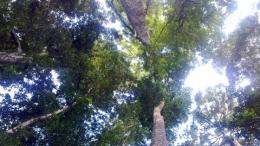Assessing protected area effectiveness

A new study published in Conservation Letters aims to measure whether parks and reserves in the tropics succeed in protecting forests.
The new study disentangled the effects of regulations governing access in unprotected lands surrounding the 110,000 sq km protected area network on the Indonesian island of Sumatra. Its results showed that measures of the effectiveness of protection differed according to the different land use regulations governing unprotected lands outside protected area boundaries.
The study, led by Dr. David Gaveau of Stanford University, and co-authored by Professor Nigel Leader-Williams, a conservation scientist from the University of Cambridge, introduces another twist in the tale of measurement bias. Its results show that controlling for geographic access alone is not enough to remove all measurement biases, which may have led to over-estimating the effectiveness of protected areas because they did not control for government-sanctioned access such as conversion to industrial-scale oil palm or rubber plantations.
Nigel Leader-Williams, Director of Conservation Leadership in the Department of Geography at the University of Cambridge adds: “Just as deforestation rates in remote protected areas should not be compared with deforestation rates from more accessible and lower altitude unprotected areas, it is also critical to control for government-mediated access in the form of regulations governing unprotected lands.”
Said David Gaveau “These new findings call into question the conclusions reached by previous studies on the effectiveness of protected area performance that have not controlled for regulations governing access to unprotected lands. As governments continue to sanction access to industrial agriculture across the tropics, this method should become an essential component of land use change research evaluating the effectiveness of protected areas.”
Such measurements have great importance for future conservation policy. Across the tropics, governments sanction access to large scale, industrial plantations causing considerable loss of natural forests and wildlife habitats. Initiatives, such as REDD, or Reducing Emissions from Deforestation and Forest Degradation, propose a set of steps to provide financial incentives to reduce greenhouse gasses associated with deforestation. The new study will help provide baselines for allocating funds from REDD and assessing the effectiveness of such conservation efforts in the future. REDD policies are vital to countries such as Indonesia, where deforestation intensified in the 1970’s and has accelerated since. The estimated forest cover on Indonesia decreased from 170 million ha in 1900 to about 98 million ha by the 1990’s. At this rate, the tropical rainforest on Indonesia could be completely logged out in another 10 years, unless the remaining forests can be protected more effectively.
Early assessments of protected area effectiveness typically measured and compared deforestation rates inside and outside protected area boundaries. However, these early assessments did not control for the ease of access, since much of the global protected area network lies “high and far” in steeper foothills and mountains, where it is less easy to cut down the forest than in flatter lowlands outside protected area boundaries. Therefore, researchers such as Dr. Lucas Joppa, currently based at Microsoft Research in Cambridge, developed sophisticated statistical tools to remove this measurement bias, by controlled for geographic access. This new study has taken approaches to measuring protected area effectiveness on to the next stage.
Provided by University of Cambridge

















